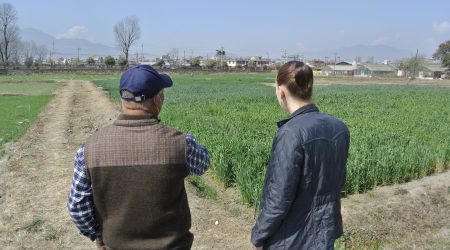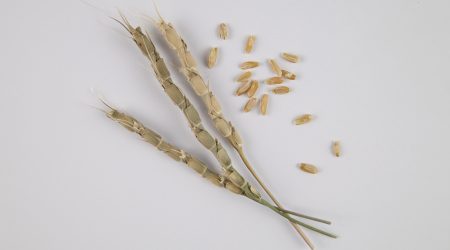Uncovering secrets in the giant wheat genome; Introducing Dr Philippa Borrill
We’re delighted to be welcoming back Dr Philippa Borrill as our newest Group Leader.
We sat down with Philippa, a former PhD student and research fellow here at the John Innes Centre, to find out what she would be working on and what she’s been up to since we saw her last.
“My group will be working on wheat, which not only provides over 20% of calories in the human diet but is also an important source of nutrients including protein and minerals like iron and zinc.
To feed the world’s growing population we need to produce higher yields of wheat.
My research aims to understand the genetics controlling the nutritional value of wheat grain, which we can then apply to improve the nutrient content of wheat alongside increasing yields.
Working on wheat is particularly challenging because it has a large genome which has multiple copies of most genes, and we currently don’t know whether all of the gene copies are important for the characteristics of the wheat plant.
Therefore, my group will also be working to understand whether these gene copies have similar or different roles, and how they interact at a genetic level.
I think I was always inclined towards a science-based career, because I found science subjects interesting at school, but I didn’t really know how you would become a scientist as a career choice.
When I was deciding what to study at University I nearly applied for engineering because I enjoyed science and maths but reading about biology in popular science books intrigued me, so I chose to study biology instead.
During my degree I realised that plants were much more interesting than what was taught at school with really important real-world applications in agriculture, so I wanted to do a PhD in plant sciences and the John Innes Centre seemed to be the best place to do that.
I initially came here in 2010 to study for my PhD as part of the Rotation PhD programme.
It was during this time that I became really interested in wheat research and I worked on how the process of senescence (ageing) affects the nutrient content of wheat grains.
For my PhD, I focussed on one specific gene and characterised how it influenced senescence at the molecular and whole-plant level.
After my PhD I was awarded a BBSRC Anniversary Future Leader Fellowship to move beyond studying how one gene controls senescence, to studying how the whole genome interacts to control senescence.
During this time I was involved in projects to sequence the wheat genome and to characterise the expression patterns of all the genes in the genome. I was also able to build a network of how genes interact in wheat to control senescence.
At the end of my fellowship I joined the University of Birmingham as a Lecturer in Plant Biology.
While in Birmingham I continued my research on wheat genomics and senescence, for example setting up collaborations with wheat breeding companies to investigate how our discoveries can be applied in the field.
I also started a new line of research studying how the multiple gene copies in wheat interact in different wheat cultivars.
Being at a University I also had the opportunity to teach, for example giving lectures to undergraduate students and leading practical classes.
There are many great things about the John Innes Centre, but I was drawn back particularly by the scientific excellence which is underpinned by high quality facilities and excellent research support.
I also value the inclusive and helpful institutional culture which I think makes a big difference both to the day-to-day enjoyment of work and to the research outcomes.
The high concentration of scientists working on related topics at the John Innes Centre is really unique and I look forward to discussing our respective research projects over a cup of tea.”



